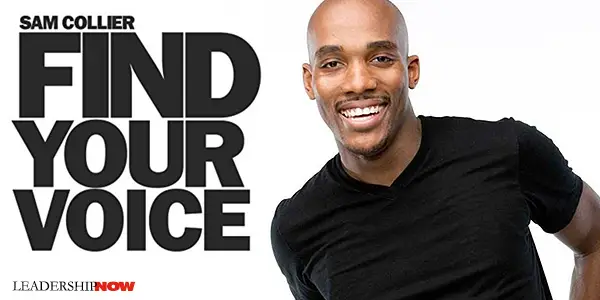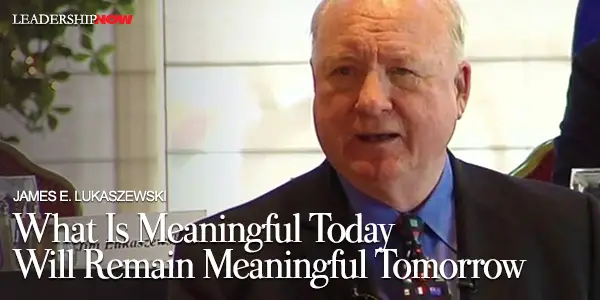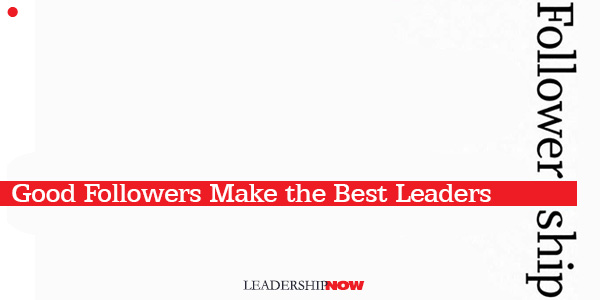 Leading Blog | Posts by Category |
 Leading Blog | Posts by Category |
09.03.21

Leading Views: Find Your Voice
When you’re unaware that someone or something is influencing you, it leaves you in a very dangerous position. But when you can see it, that’s when you begin to access the power of influence in your life. Then you begin to manage it. And when you can manage it, the game changes! Collier focuses on three categories of people that have the ability to change your life right now: friends, leaders, and followers. Each can influence us through our thoughts, decisions, and atmosphere (culture). We should choose our leaders carefully. “Find a voice that can lead you to success.” To that end, “not every leader should be followed.” If they are not leading where you want to go, don’t follow. In choosing a leader, remember:
A great leader can help you find your voice. In the same way, you can do the same for others and find your voice through your leadership. Ask yourself the following questions: Who is following me? 
Posted by Michael McKinney at 10:38 AM
07.30.12

Influencing Up
IF you’re trying to make a significant contribution you will have to influence people you can’t control. In other words, you will need to influence up.
Cohn and Bradford deal with all of these issues. Beside any self-examination you will need to do, you will need courage to deal with two influencing up issues: First, the impact of large power differentials. Obviously, the greater the power differential between you and the powerful person, the more difficult influence becomes. Unfortunately, this kind of large power gap tends to produce dysfunctional behavior for people on both sides of the equation. Relatively high-power people tend to overvalue their own contributions and undervalue others’, whereas those with less authority tend to overestimate higher-level individuals’ power and underestimate their own. Second, becoming a partner with high-powered people. Partner does not necessarily mean equals. It’s a matter of “joining with” not just “reporting to” and taking responsibility for developing the partnership. To do that you need a clear understanding of your boss’s world. Characteristics of this partnership are:
Just as leaders should ask themselves, “Why am I doing that?” so should junior partners ask themselves, “Why aren’t I doing that?” Not all bosses of course, are interested in the idea of influencing up and this is one area where the partnering mind-set really helps. You need to carefully examine the interests, power, knowledge, and agendas of every relevant individual, group, or organizational stakeholder—and determine who influences others. Although you might not be able to sway a powerful person, he or she might respond to someone else’s argument. Who has those connections? This complete analysis is critical for selling ideas or proposals, gaining backing for projects, neutralizing resistance, or otherwise making a difference. Building on the model they first presented in their book Influence Without Authority, Cohen and Bradford deal with challenges of power differentials and partnering and how to overcome them in a step-by-step, straightforward way.

Posted by Michael McKinney at 10:42 AM
06.15.12

What’s Wrong with Leadership Training Today? IT’S A DIFFICULT TIME for leaders. “Our familiarity with and disrespect for our leaders,” writes Harvard professor, Barbara Kellerman in The End of Leadership, “coupled with our feeling entitled and being emboldened, saps their authority, which then drains their power and influence.”
IT’S A DIFFICULT TIME for leaders. “Our familiarity with and disrespect for our leaders,” writes Harvard professor, Barbara Kellerman in The End of Leadership, “coupled with our feeling entitled and being emboldened, saps their authority, which then drains their power and influence.”
Commenting on the 2011 budget-ceiling talks she finds that Barack Obama’s followers are “more disposed to resist him than to support him….No one was able to lead…and no one was willing to follow.” Perhaps no one was able to lead because no one was willing to follow. Leading in America is now more difficult than ever “not only because we have too many bad leaders, but because we have too many bad followers.” Kellerman cites lack of involvement as the culprit, but it goes further than that. We have never been taught how to support a leader in the right way. Followership is as important a skill as leadership. Kellerman notes that the contract—you lead, I’ll follow—between leaders and followers has been undermined “because of the information to which followers now have access, too many leaders are judged by too many followers to be unethical or incompetent or both.” Familiarity with our leaders had bred contempt. Technology has changed the social landscape providing us with so much more information. But it has, I would argue, informed us more broadly, but for the most part, not more deeply—if we even had the time or the inclination to go more deeply. I would also suggest that we are not, at times, very good judges. We lack facts and context much of the time. What frames our judgments are often selfish concerns—just like our leaders. And too, we rarely judge others in the manner that we would like to be judged. The End of Leadership offers a report on the state of leadership and followership today. Kellerman has surveyed the history of leadership to pinpoint a trend—the diminishing power and influence of leaders and people in authority and the increase of power and influence of ordinary people—followers. In recent years, communications technology has played a large part. “The effect on leaders is to diminish them. The more we know about how leaders and managers manage, the more they tend to shrink.” The contract between leader and follower has changed. The assumptions on which it was based has changed because first, “the old justifications for having power, authority, and influence are no longer so persuasive and second because people in the present think of themselves are more important, more entitled than did people in the past.” Kurt Anderson asked in New York magazine, Is Democracy Killing Democracy? He writes: So now we have a country absolutely teeming with irregular passions and artful misrepresentations, whipped up to an unprecedented pitch and volume by the fundamentally new means of 24/7 cable and the hyperdemocratic web. [There is ] the misapprehension that democratic governing is supposed to be the same as democratic discourse, that elected officials are virtuous to the extent that they too default to unbudging, sky-is-falling recalcitrance and refusal. And the elected officials, as never before, are indulging that populist fantasy. Just as the founders feared, American democracy has gotten way too democratic. I wonder if we have—in our radical shift to the entitlement of followers and the bad leadership that encourages it—sowed the seeds for an overcorrection in the other direction. Perhaps we will find ourselves welcoming a society governed by extremely self-deferential leaders to sort it out. History shows us that when societies get to the point that they can’t properly govern themselves, they don’t get more disciplined and make the necessary corrections, they instead get behind anyone that will make all the “bad” go away—usually with negative consequences. Because we have been able to “do” leadership in a way that has been less respectful of the follower and get away with it, doesn’t mean we were doing it right. While old methods of leadership are not tolerated at the present time, it doesn’t mean leadership itself has changed. The “right” way of leading people has never changed; our approach to leading people just swings back and forth from ditch to ditch. History shows us that we rarely get it “right.” Kellerman observes that in the world in which we actually live, “leaders tend to put self-interest ahead of the public interest.” How true. The idea that our leaders reflect who we are should give us pause. Much of the problem with leadership training, in my view, is that we are trying to develop something in leaders long after the train has already left the station. It’s not that it can’t be done. It’ is just much harder. Good leadership development begins much earlier in life. Given our situation, Kellerman asks, how do we learn to lead in the twenty-first century? How to learn to lead when leaders are diminished from what they were, even in the recent past? How to learn to lead when resources such as power, authority, and influence are scarcer than before—and when any number of followers is as likely to be resistant as deferent? And, finally, how to learn to lead when the context itself is fraught with complexity and constraint? Could we develop betters leaders if we developed better followers and would better followers create a pool of better leaders? Should we be training for followership? Should we be teaching the right kind of followership is leadership? The End of Leadership is a vitally important book that every leader/follower should read and consider, but it is the tip of a much larger discussion about leadership, followership and society. Kellerman writes that “it is meant as a caution about the future of leadership in the twenty-first century. For nearly everywhere, leaders are found wanting, followers are restive, and the context is changing—sometimes at warp speed. So unless we get a grip, the prognosis is grim.” Kellerman says that the leadership industry must make at least four changes:
Kellerman lays the foundation with this: “We need to think of leadership as a creative act—for which leaders and followers both are educated, for which leaders and followers both are prepared over a lifetime of learning….There are ways to educate women and men so they learn to be good, smart followers as well as good, smart leaders, and develop as large capacity for contextual intelligence as for emotional intelligence.” Absolutely.

Posted by Michael McKinney at 03:19 PM
05.17.12

Leading Views: The Star Follower Frequently, when you hear a leader say that they want followers they can trust, what they mean is they want followers who will do what they say and never question them. When they do this, they are letting their insecurities show. It’s not a healthy relationship for either the leader or the follower. The leader becomes isolated and the followers do not grow into their own potential. Frequently, when you hear a leader say that they want followers they can trust, what they mean is they want followers who will do what they say and never question them. When they do this, they are letting their insecurities show. It’s not a healthy relationship for either the leader or the follower. The leader becomes isolated and the followers do not grow into their own potential.
Robert Kelly, author of The Power of Followership, described the leader/follower dynamic in The Art of Followership, this way: Star followers think for themselves, are very active, and have very positive energy. They do not accept the leader’s decision without their own independent evaluation of its soundness. If they agree with the leader, they give full support. If they disagree, they challenge the leader, offering constructive alternatives that will help the leader and organization get where they want to go. Some people view these people as really “leaders in disguise,” but this is basically because those people have a hard time accepting that followers can display such independence and positive behavior. Star followers are often referred to as “my right-person” or my “go-to person.”
Posted by Michael McKinney at 01:58 PM
10.26.11

It’s Not About You It’s Not About You (Reissued as The Go-Giver Leader) by Bob Burg and John David Mann, is the story of a leader’s journey. A journey any good leader has to take.
It’s Not About You (Reissued as The Go-Giver Leader) by Bob Burg and John David Mann, is the story of a leader’s journey. A journey any good leader has to take.
Ben begins with an agenda. His job is to convince or if necessary, to steamroll a manufacturer of high-quality chairs to accepting a merger. Ben’s company believes it to be a good thing, but the target company is not so sure. Ben’s mindset as he starts out is: “how do I get them to do what I want them to do.” Somewhere between getting people to understand him and slowing-down long enough to understand them, he found his answer. Through a series of encounters with a mentor—Aunt Elle—and a lot of reflection Ben comes to understand that it is not about him. His journey causes him to reflect on five lessons: Lesson #1: Hold the Vision. The hard part isn’t coming up with the vision, it’s holding on to the vision. “As a leader, your job is to hold fast to the big picture, to keep seeing it in your mind’s eye, with crystal clarity, where it is you are going—that place that right at this moment exists only in your mind's eye. And to keep seeing that, even when nobody else does.” Lesson #2: Build Your People. “People have all sorts of amazing qualities and natural abilities trapped inside them. With the wood, it’s knowing how to apply the heat. With people, it’s applying your belief.” If you give people something great to live up to, they usually will. “How influential you are, comes down to your intention. What are you focused on? Your benefit, or theirs?” The more you yield, the more power you have. Lesson #3: Do the Work. Be humble and stay grounded. Aunt Elle said, “People who achieve great things that the world will never forget, start out by accomplishing small things the world will never see.” Lesson #4: Stand for Something. Lead from who you are. People will figure it out anyway. People need to trust your competence, but they need to trust your character more. “Competence is simply the baseline, the thing that puts you in the game. It matters, but honestly, it’s a dime a dozen.” The authors remind us that you can only lead as far as you grow. Aunt Elle says, “What you have to give, you offer least of all through what you say; in greater part through what you do; but in greatest part through who you are.” Lesson #5: Share the Mantle. It’s not about you. “You are not their dreams, you are only the steward of those dreams. And leaders often get it backwards and start thinking they not only hold the best of others but they are the best….The moment you start thinking it’s all about you, that you’re the deal, is the moment you begin losing your capacity to positively influence others’ lives.” Whatever great parenting looks like, it is not about the parent. The Go-Giver Leader is a great presentation of solid life lessons. A book to be read and passed around. Unfortunately, “it’s not about you,” is not the kind of lesson that once learned, is always remembered. If it was, fewer great leaders would finish poorly after so many years of outstanding service. This is an issue that we face over and over again, but hopefully in ever diminishing frequency and intensity as our leadership matures. This book is a great reminder of the power of the right kind of leadership; leadership that comes from an inner strength of understanding, service and outgoing concern for others.

Posted by Michael McKinney at 09:29 PM
12.27.10

“If they do that, I don’t consider them a leader.”We need to get over the notion that a leader is a perfect person with a set of qualities that are balanced and in perfect alignment. And to be less makes you, you know … a manager. If that were the case we might as well forget about being a leader. We’re just not up to it. And yet life goes on and people do lead—in spite of themselves. And their humanity gives us all hope that we too can lead, influence, have an impact, and create meaning.A good leader is a person that knows their weaknesses, makes (sometimes really stupid) mistakes, admits them, makes an effort to do better, and moves on. In spite of their own inadequacies they jump back in every day and work for a cause bigger than themselves. The challenge is not in avoiding mistakes; it is in knowing how to deal with them when they are made. A good leader knows they can’t do it on their own. They have limitations. They need the support and effort of those around them. In fact, they put people on their team specifically because they are lacking in one area or another. A leader doesn’t let their weaknesses hold them back. A good leader understands that leadership development is a life-long process of continual learning; continual improvement. Being a leader isn’t a place you arrive at. It’s is something you grow into and grow with if you are going to be effective. Leadership without growth is not sustainable. If you are in it for the long-term, you have to be teachable, not perfect. Perfection doesn’t qualify you as a leader, but knowing what to do about your inadequacies, foibles, quirks, weaknesses, and blunders makes it possible.
Posted by Michael McKinney at 12:19 AM
04.07.10

Goldsmith’s Rule of Hierarchical PerspectiveMarshall Goldsmith presents in Mojo, a perspective that if taken to heart could free many people from the frustration they encounter when they find someone over them in a hierarchy. Sometimes we are the smartest, quickest, best person in the room and we can’t understand why we aren’t in the driver’s seat. And we let everyone know it. We get resentful and disrespectful and unwittingly erode any influence we might have had—compounding our own problem.Whenever we begin to moan about something not going our way, we might remember Goldsmith’s prescription: Every decision in the world is made by the person who has the power to make that decision—not the “right” person, or the “smartest” person, or the “most qualified” person, and in most cases not you. If you influence this decision maker, you will make a positive difference. If you do not influence this person, you will not make a positive difference. Make peace with this. You will have a better life! And, you will make more of a positive difference in your organization and you will be happier.
Posted by Michael McKinney at 11:41 PM
02.26.10

Are Leaders Destined to Disappoint?Historian David Greenberg wrote in the Atlantic, “Americans have fallen, starry-eyed, for leaders who speak of a future unencumbered by history’s weight.” Intellectually we must know that this isn’t possible, yet is it too much to expect real change, fundamental change—a break from the past? It’s unsettling to think that we are only slaves to our past. Are we demanding too much?Greenberg continues, “Theodore Roosevelt’s New Nationalism, Woodrow Wilson’s New Freedom, FDR’s New Deal, JFK’s New Frontier, even George H. W. Bush’s New World Order—all began with the promise of the new. Of course, after the flush of a campaign, both voters and presidents have invariably discovered that history imposes constraints.” And we are left disappointed. Of course, this dynamic affects not only political leaders, but leaders everywhere. One always has to deal with what is (past and present) and the real level of desire (the crisis)—for transformational change to occur. Leadership is a creative act. A leader seeking transformational change needs to have three basic elements in place: clearly defined goals (the how), strong values with which to measure those goals (the why), and an environment that is urgent to change (an opportunity). Expectations create opportunities for leaders. The motivation from which springs the leader’s initiative is most often influenced by certain expectations on the part of the potential followers. Rosalynn Carter once said, “A leader takes people where they want to go. A great leader takes people where they don't necessarily want to go, but ought to be.” This suggests that a leader’s responsibility is to do more than just serve up our wants. As Insead’s dean J. Frank Brown said, “Leaders must learn to listen and question before they act.” We get the wrong kind of leaders when we place all of the responsibility of our expectations on their shoulders. In that environment we will always find individuals that are all too happy to pander to us and promise what they can never deliver in return for a title—placeholder leaders. Leadership is a shared responsibility. A great leader must elevate their followers and give them power and responsibility to act or they can never really lead them. Greenberg writes, “Twenty-five years ago, the political scientist Theodore Lowi published a book called The Personal President He concludes, “It is easy to propose that we lower our expectations for our new presidents—even, or perhaps especially, for presidents who come bearing lofty promises of transformation. But we can’t correct the problem, Lowi’s diagnosis suggested, simply by resolving to demand less from our chief executives or by vowing to learn from the past. The problem is rooted in nothing less than the presidency’s assumption of immense powers, and of a central role in our imagination. Candidates have no better path to victory than by inspiring us with dreams of a new political era, and presidents have no choice but to attempt “too much.” In doing so, however, they can only disappoint us.” Perhaps we aren’t demanding too much of our leaders, we are instead, demanding too little of ourselves. Can we separate ourselves from our “history” and act creatively for real change? Maybe we need a little less heroic leader and a little more heroic follower? It requires leadership at all levels.
Posted by Michael McKinney at 04:16 PM
11.20.09

Lead Your Boss
A CAN-DO PERSON himself, Theodore Roosevelt once advised, “Do what you can, with what you have, where you are.” Roosevelt’s admonition is easier said than done. Most of us are not in a position to implement sweeping change by the wave of our hand. And some of us are in a counterproductive culture where sticking your head up is a good way to get it knocked off. But we can learn to do what we can, with what we have, from where we are.It means that we must learn the art of leading from the middle—from among rather than from in front. And if we are honest, in most contexts, we find ourselves leading from the middle. (CEOs included) We are trying to influence the people around us, above us and below us. So learning to appropriately and effectively lead in this way, will impact our success in most areas of life. John Baldoni has written a primer on leading from the middle with Lead Your Boss: The Subtle Art of Managing Up. What I appreciate about his writing is that it is down-to-earth, nuts-and-bolts, and easy to connect with. He is aware of the fact that it is not easy and can be fraught with peril. He writes, Those who lead from the middle are those who think big picture and can do what it takes to get things done so their bosses and their teams succeed….Those who succeed at leading from the middle also are artful and adept managers. Baldoni says that leading up begins with answering three questions: 1. What does the leader need?
As he suggests, this is a selfless act that speaks to the heart of leadership. It requires people who can think for themselves and take the initiative to make things happen. Answering the three questions, taking the initiative and making it happen is the trick and is the focus of the rest of the book. Lead Your Boss walks you through every critical step of leading up. It provides instruction for overcoming those inevitable obstacles and you’ll find tips and strategies for:
Leading up is not a solitary job. “Leading up requires the ability to develop the talents of others; this is important for two reasons,” writes Baldoni. “One, you need to demonstrate that you know how to lead others; and two, putting others into leadership positions gives you the time you need to think and act strategically, that is, to lead your boss and your team more effectively.” Below is a two and a half minute video that provides a good overview of the book by author John Baldoni: 
Posted by Michael McKinney at 03:26 PM
03.23.09

MBA Arrogance and the Myth of Leadership
PHILIP Delves Broughton, author of Ahead of The Curve: Two Years at Harvard Business School, writes in the Financial Times about MBA Arrogance and the Myth of Leadership. Broughton observes: What business schools can teach is organisational behaviour. They can teach compensation systems and recruitment processes. They can offer classes on cash and non-cash incentives, on training, promotion and the value of a corporate culture. They can offer frameworks for negotiations, strategy decisions and implementing change. But when they bundle this up and call it leadership, they risk leaving their students with the faulty impression that they are now qualified, if not obliged, to go into the world and lead. It breeds the arrogance for which MBAs are mocked. It is the merit of Broughton to remind readers of the problems of surrounding leadership education. He is right. Business schools are best at teaching the competencies that business leaders need when performing their tasks. And at this point in time, they are probably rethinking what that means. Teaching leadership – as in take these classes and read these books and you are a leader – is something else. Broughton correctly asserts that MBA students often walk out into the world thinking that they are uniquely equipped to lead the world. It’s an arrogance that is rarely appreciated in the real world and an approach that does not serve them well in the long-term. Books and lectures do not make you a leader, but they can give you the tools to become a leader through the practice of leadership. They point you in the right direction. They fast-track your awareness. They are extremely valuable but they do not make you a leader. That label is earned, not taught. Broughton states, “Not all MBAs can be leaders, nor need they be. Every business needs followers: people who are good at what they do, who are able to implement the plans laid out by leaders.” Here is where discussions of leadership often derail. Broughton is confusing leadership with position. Position is the brass ring and there are a limited number of those to go around. Most people will be left out. He’s right. We can’t all have position, but we can all be leaders. Likewise, we are all – regardless of our position – followers. The idea that “I’m a leader, not a follower” is a foolish notion and belies the ignorance of what leadership really is by anyone who states it. Leadership is intentional influence. Basic to a proper understanding of leadership is the understanding that leadership is not position and does not make you a leader. There was a time when management was just management, the science of providing organizational support for innovators and salespeople to win customers and revenue. No, business schools need leadership courses. They just need better ones. They need courses with a proper emphasis about leadership. I appreciate his phrasing – “this super-sizing of management” – but management and leadership go together. They are often separated so that we can, by pulling them apart, see how they fit together. We need both and we need to be practicing both. One is not better than the other. A good leader manages. A good manager leads. 
Posted by Michael McKinney at 10:50 AM
10.27.08

Weeding Out the Leaders We NeedIn Time magazine this week, Michael Kinsley writes that we don’t just need a good man in the White House this time, we need a great man. He thinks both candidates have the seeds of greatness, but “unfortunately”—and this is what caught my eye—“our current political system seems designed to weed out precisely the qualities that are most needed at the moment.” He suggests that at a time like this we need astringency, not empathy. Feeling our pain won’t get it done. We need leaders willing to tell people what they don’t want to hear. “It's not comforting people about their current situation and reassuring them it will get better. It's telling them that the situation is likely to get worse and that only their efforts can determine how soon it will start getting better. Astringent leadership is Churchill calling on Britons to ‘brace ourselves to our duties.’” But he’s right. Who wants to put that in the White House? We vote for people that tell us that they will fix everything and not bother us. We vote for people that don’t make us take responsibility—who can place the blame somewhere else—who will level the playing field at someone else’s expense—smooth talk over straight talk. History teaches us that this always comes at a cost. It’s problematic for both leaders and followers. Both get their roles wrong and both pay a price. Kinsley writes: We have lucked out several times in our history when implausible characters showed unexpected greatness when it was needed: a country lawyer from Illinois, a spoiled patrician in a wheelchair, to name two obvious examples. Even more miraculous (though troublesome for democracy), both Lincoln and F.D.R. were elected by promising more or less the opposite of what they did in office. Lincoln said he'd preserve the institution of slavery. F.D.R. said he'd balance the federal budget.Can we expect this fortuitous turn of events again?
Posted by Michael McKinney at 10:56 AM
05.07.08

Out of Context: Great Followership Is Harder Than Leadership"It’s no surprise that books on leadership, promising to revel the secrets of countless football coaches and historical figures as disparate as Moses and Attila the Hun, outnumber those on followership several thousand to one. After all, leadership is the prize that ambitious men and women have struggled and even died for at least since Alexander the Great. Whether the field is politics, business, science, or the arts, leaders are at the center of the action, the envied if not enviable stars whose lives seem to burn a little brighter than our own. We aspire to their power and its perquisites even as we take unseemly pleasure when one of them stumbles and falls. Indeed, the moment when each of us realizes he or she is mostly a follower, not a leader, is a genuine developmental milestone; who forgets that painful leap over the line of demarcation between the boundless fantasies of childhood and the sober reality of an adulthood in which we will never quite become the god we hoped to be?" —Warren Bennis, The Art of Followership
Posted by Michael McKinney at 06:50 AM
04.07.08

Why Should the Boss Listen to You?
• “Had they asked me, we could have avoided that dumb series of mistakes.”
The mindset these comments reveal is quite common, says Jim Lukaszewski in his book, Why Should the Boss Listen to You?, but this sort of approach will always get in the way of your becoming a trusted advisor. Who doesn’t want to be noticed? Get ahead? Who doesn’t want to be asked in on decisions before they are made? Lukaszewski says that it is largely a matter of perspective. According to Lukaszewski, it is imperative that you “set aside all your staff-based assumptions and orient your life, your thinking, and your recommendations to the perspectives, viewpoints, and issues of those you advise.” You need to learn to work from a much broader perspective. Lukaszewski describes how leaders think and operate and why this is important to the trusted advisor. At the core of this book, he presents a seven-discipline approach to becoming a strategic trusted advisor.

His advice is clearly written and right on. He writes, “The counselor’s prime directive is always to look at the questions, issues, opportunities, and vulnerabilities from the boss’s perspective first, and to test all advice against the leader’s perspective. This approach leads to better, more useable advice, more quickly.” 
Posted by Michael McKinney at 12:05 AM
03.31.08

Aligning Your Leadership to Followers IdentitiesWhen we think about leadership, we tend to focus almost entirely on the leader. Yet without followers, there is no leader. Leadership is participatory: leaders and followers exist in a mutually beneficial relationship where each adds to the effectiveness of the other.Key to this process is listening, because leadership is as much about listening as it is about talking, or perhaps more so. From the beginning, a leader must be informed by the followers’ values, beliefs, and aspirations, the followers’ identity. The commitment gap people frequently experience, the difference between what the leader desires and what the followers actually do, can often be traced back to not aligning the elements of leaders’ and followers’ identities—who they think they are—to find common ground on which to function and grow. In an article that appeared in the August 2007 issue of Scientific American Mind, titled “The New Psychology of Leadership,” authors Stephen D. Reicher, Michael J. Platow and S. Alexander Haslam present research supporting the idea that effective leaders—those who can move followers from one behavior to another—grasp what their followers believe they are and represent, and then create a shared identity. They write, “The development of a shared identity is the basis of influential and creative leadership. If you control the definition of reality, you can change the world.” The link between identity and leadership and its function in understanding the world we live in is therefore of critical importance. We asked two of the article’s authors, Reicher and Haslam, to comment further. LeadingBlog: In the Scientific American Mind article you write that “effective leaders must work to understand the values and opinions of their followers—rather than assuming absolute authority—to enable a productive dialogue with followers about what the group embodies and stands for and thus how it should act.” Does this mean that leaders must learn to communicate with the group on the basis of where they are before they try moving them to a new place? AH Essentially yes. The point is that you can’t lead “us” unless you know what “we” stand for. SR The core of our argument is that a leader needs to construe him- or herself and his or her policies in relation to the shared group identity. This requires, first, a deep cultural knowledge of the group and its history; and second, a set of rhetorical skills that allow the leader to relate the general (group identity) to the particular (self and policies). How are these acquired? One possibility is to acquire the cultural knowledge from the inside as a function of growing up in the group and having an intuitive grasp of “who we are.” However, it is notable that many leaders have been marginal: Hitler, born in Austria; Stalin, a Georgian; Napoleon, from Corsica; Gandhi, brought up in South Africa. In these cases, the person has to make an explicit study of the group and may indeed become more reflexively aware of the nature of the identity than insiders, whose knowledge is taken for granted. They may also have to work harder at being accepted as insiders and thereby hone their skills. LeadingBlog: You define leadership as the followers’ willing compliance with the goals or vision of the leader. If a leader believes it is in the group’s best interest, would he or she ever need to enforce compliance in the hope that willing compliance would eventually follow? AH Sometimes yes, because not all members of a group will have the same confidence that the leader represents them. However, when leaders resort to brute force, it needs to be understood that essentially they are using power, not leading. This is the distinction between “power over” and “power through.” The latter is identity-based; the former is resource-based and is not true leadership. LeadingBlog: It would seem that, at first, many dictators do identify with the people and give them what they want. But once the followers’ needs are met, they want less dictatorship and more freedom. In the case of Hitler, it would appear that he rose from the ranks to give them what they wanted: strong leadership and security. His followers moved toward him and he toward them as they both satisfied each other’s needs. They wanted strong leadership and he wanted to be a strong leader. The result, crazed dictatorship, became possible because of the ratcheting-up effect. In the end he was despised by many who had followed him. AH I think this analysis is largely correct. The problem was that the content of the group’s identity was itself problematic, so in a sense the group got the leader it wanted (and deserved). SR It is perfectly plausible to suggest that leadership may be a developmental process that works differently at different phases. To start with, one does need popular compliance because one is seen to represent the group. That’s the psychological process we have described: gaining power through others by being seen as one of them. This power can then be used to change the political and institutional structures of a society, to gain control over the mechanism of repression: police, courts, etc. That, then, puts one in a position to outlaw dissent and even to exert power over people if they should choose to disagree with one’s proposals. In a sense, there is a shift from a psychological to a political-sociological basis for leadership. At the end of the process, people may realize that the person they hailed as a liberator has become an oppressor, but it’s too late to do anything; for example, the nature of Hitler’s leadership shifts from pre- to post-1933 with the passage of the enabling law, the rise of the repressive apparatus, and so on. However, we shouldn’t overdo the contrast. Hitler still had popular support even as the repressive apparatus was put in place. The repression itself was seen as defending the group against threat (just as Stalin’s terror was seen by many on the inside as self-defense against enemies). What is more, even if people began to dissent privately, their willingness to challenge the system openly and collectively depended on whether they saw others as embracing or rejecting Hitler. In other words, it may be true that active compliance depends on one’s own acceptance of the leader as an in-group member. However, active opposition depends on perceiving that others reject the leader as an in-group member. LeadingBlog: In your article you state that “no fixed set of personality traits can assure good leadership because the most desirable traits depend on the nature of the group being led.” Does this indicate that leadership is learned throughout life through various leader-follower experiences, a kind of leader-follower feedback loop? AH I think that’s probably right, yes. Indeed, we have some (as yet unpublished) work suggesting that the people who turn out to be the best leaders are those who have previously been the best followers. SR There is always a balance in leadership between conforming to existing definitions of the group and reshaping the group identity. It is perfectly true that the ability to advance controversial new notions of identity may depend on being securely accepted as an in-group member. Hence, with time, a leader might be better able to reshape the sense of “us.” It is also true that, insofar as the sense of identity changes as a function of context, the leader needs to be multifaceted and emphasize different facets at different times. Those who fail to do that have a limited shelf life. So, for instance, Britain in war is very different from Britain in peace, and Churchill’s inability to adapt to that resulted in his 1945 defeat. LeadingBlog: David Hulme, in his 2006 book, Identity, Ideology, and the Future of Jerusalem, addresses the role of identity and ideology in the solution to the Jerusalem Question as part of the larger context of the Arab-Israeli conflict. He examines some of the leaders and followers involved in the Arab-Israeli conflict in the context of their identities and ideologies. He notes that in the lives of some of these people, “identity and ideology can shift somewhat through experience.” Do you find that a leader may need to do this to stay relevant and influential? While keeping the end in mind, should effective leaders change their approach and rhetoric as new priorities come into play? AH Again, this is correct, and very much consistent with our idea that social identity is itself context-dependent and labile. Accordingly, leaders have to adapt to the changing circumstances of the group—which sometimes proves impossible (think of Churchill after the war). SR The issue of leadership and conflict is of critical importance. Often, especially in psychology, we act as if prejudice, hostility and conflict arise unaided from the human psyche rather than analyzing how different leaders create images of the other that facilitate hatred. Accordingly, we have to ask both how and why they do this if we want to overcome it. The how is centered on constructions of identity. That is, hatred characteristically derives from an image of a virtuous “us” under threat of annihilation by a demonic “them.” Certainly in the Middle East the conflict is fueled by both sides sharing a sense of victimhood, vulnerability and virtuous suffering. As Peter Novick, for instance, has observed, is peace even possible as long as the Holocaust figures so centrally in Israeli identity? It should be stressed that the ways in which these versions of identity are sustained is not only rhetorical but also practical. To take one key example, Ariel Sharon’s jaunt on the Temple Mount was immensely effective in provoking Palestinian anger and then allowing Sharon to argue that peace was impossible with such a violent “other,” and hence the security agenda had to prevail. This example also speaks to the why of leadership action. Simply, if leaders gain power by being seen to represent us, then the invocation of enemies is a very effective way of securing in-group support. First, the very act of identifying an enemy shows one is concerned for the group. Second, and more critically, the fact that one is seen to oppose this enemy more strenuously than one’s rivals do (in Sharon’s case, Barak’s Israeli Labor Party, then in power) is a powerful tool in gaining advantage over those rivals. Thus intergroup hostility can be a tool in intragroup power struggles, and that is often what makes it so difficult to stop such conflict. LeadingBlog: How identities change is an important aspect of hope for resolution in identity- and ideology-based conflicts. You write that “the emergence of social identity helps to explain the transformation in the strategies of rulers associated with the birth of modern nation states.” Would the emergence of social identity—a shared national identity—also help to explain why we sometimes find ourselves at an impasse on issues of national identity, such as the Middle East crisis? Should leaders be placing more emphasis on issues of identity? AH Again, I think this analysis is basically correct, and quite astute. LeadingBlog: You write of the symbiotic relationship between leaders and followers in your article. If a leader was trying to move a group to a new understanding or reality, would the process be to tap into their shared identity and then attempt to create a new identity? How malleable is identity? AH I think this is a fairly effective strategy. Tony Blair might be a good example of someone who has transformed the British Labour party in exactly this way (which is not necessarily a good thing!). As with the earlier point, identity is malleable (particularly if the new forms of identity work for followers), but there are limits, as indeed Tony Blair found. SR How malleable is identity, then? How much can we reshape it in order to resolve conflict, to change the way we are and what we do? This is an immensely complex question. The short answer, to paraphrase Marx, is that we can make our own identities, but we don’t do so under conditions of our own choosing. Identities have a certain inertia. We do construct them, but over time those constructions are sedimented down into what might be called “material cultures.” What, say, being American means is enshrined in textbooks, in monuments, in the layout of museums and in the structure of institutions. These are all made by people at one point in time as a reflection of identity, but for subsequent generations they become part of the social reality, which in turn shapes identity. If we are to challenge them, then, we need new arguments and new rhetorics, but we also need to create new social realities: new textbooks, new monuments, new rituals, and so on. The skill of a leader, then, must be practical as well as verbal. Leaders, as we put it, must be impresarios of identity. Perhaps, before they can change the world at large, they need to create new structures within the social movement itself that allow people to “live out” the ideas they are advancing and hence to make those ideas more tangible and convincing. Clearly, much of this is rather general. These questions represent an agenda for ongoing research—and what exciting research it will be! The authors are releasing a new book in October 2008 that builds on these concepts. The New Psychology of Leadership: Identity, Influence and Power will be available from Psychology Press.
Posted by Michael McKinney at 12:16 AM
03.14.08

Good Followers Make the Best Leaders IN CASE you didn’t know it by now, let me just say, followership is the crucible of leadership. There is no better way to learn leadership than by being under someone else—leading from the second chair. As ironic as that may sound, it’s true. Learning to lead under someone else provides you with the opportunity (the necessity) to learn to lead without coercion. You learn to let your leadership speak for itself—authentically.
IN CASE you didn’t know it by now, let me just say, followership is the crucible of leadership. There is no better way to learn leadership than by being under someone else—leading from the second chair. As ironic as that may sound, it’s true. Learning to lead under someone else provides you with the opportunity (the necessity) to learn to lead without coercion. You learn to let your leadership speak for itself—authentically.
Yet we still, as Barbara Kellerman states in her important new book, Followership, overestimate the importance of leadership and underestimate the importance of followership. She argues that “thinking leadership without thinking followership is not merely misleading, it is mistaken.” Why? The context of leadership has changed. First, leaders have been demystified, in part by modern media, which demands grist for its mill 24/7; and in part by the modern culture, in which figures of authority are no longer exalted or even so much respected. Second, because the line between the leader and the led has been blurred, the led have been emboldened. She points out that much of this is cyclical. I would agree. It’s hard for human beings to find balance. Consequently, we continually find ourselves reacting to someone else’s excessive behavior. While we have spent a great deal of time distinguishing between types of leaders, we have not done the same with followers. Kellerman spends a good portion of the book explaining followers. She describes four types: Bystanders, Participants, Activists, and Diehards. She writes: “Followers are us. This does not, of course, mean that all of us follow all of the time—sometimes we lead. But all of us follow some of the time. It’s the human condition.” She advocates that followers not try to become something else, but more importantly that they change their response to their rank, their response to their superiors and to the situation at hand. She emphasizes:
What we need now is a Followership Part 2, where it is explained to followers just how one should follow. We do a disservice to followers – as we have with leaders – by requiring no character development and self-discipline. When we learn to develop better followers, we will get better leaders. 
Posted by Michael McKinney at 10:06 AM
|
BUILD YOUR KNOWLEDGE


How to Do Your Start-Up Right STRAIGHT TALK FOR START-UPS 
Grow Your Leadership Skills NEW AND UPCOMING LEADERSHIP BOOKS 
Leadership Minute BITE-SIZE CONCEPTS YOU CAN CHEW ON 
Classic Leadership Books BOOKS TO READ BEFORE YOU LEAD |
|